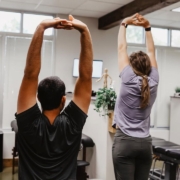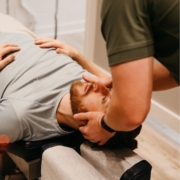Headache Relief with Chiropractic Care
Headaches are a common ailment that affect millions of people worldwide. They can be caused by a variety of factors such as stress, tension, dehydration, sinus congestion, and more. While many people opt for over-the-counter pain medication to alleviate their headache symptoms, others turn to alternative therapies like chiropractic care.
What is Chiropractic Care?
Chiropractic care is a holistic approach to healthcare that focuses on the spine and nervous system. It involves the manipulation of the spine to relieve tension and pressure on the nerves, which can lead to a range of health benefits, including headache relief.
How Does Chiropractic Care Help a Headache?
Chiropractors believe that misalignments or subluxations in the spine can cause tension in the muscles, which can then lead to headaches. By using gentle, non-invasive techniques, chiropractors can realign the spine and restore proper nervous system function. This, in turn, can help alleviate headache symptoms and prevent future headaches from occurring.
There are several different types of headaches, and chiropractic care can be effective in treating all of them. Here are some of the most common types of headaches and how chiropractic care can help:
- Tension headaches: These are the most common type of headache, and they are often caused by stress or muscle tension in the neck and shoulders. Chiropractic adjustments can help relieve tension in these areas and reduce the frequency and intensity of tension headaches.
- Migraines: Migraines are a more severe type of headache that can be accompanied by nausea, vomiting, and sensitivity to light and sound. Chiropractic care can help reduce the frequency and severity of migraines by realigning the spine and reducing nerve pressure.
- Cluster headaches: Cluster headaches are rare but extremely painful headaches that occur in clusters over a period of several weeks or months. Chiropractic care can help reduce the frequency and duration of cluster headaches by relieving tension in the neck and shoulders.
Medication-Free Pain Relief
Chiropractic care is a safe and effective treatment option for headaches, and it is often preferred by those who want to avoid the side effects of medication. Chiropractors use gentle, non-invasive techniques that are tailored to each individual’s needs, and they work with patients to develop a customized treatment plan that addresses their specific symptoms and concerns.
If you suffer from headaches and are looking for a natural, drug-free solution, chiropractic care may be right for you. Contact a qualified chiropractor in your area to schedule a consultation and learn more about how chiropractic care can help alleviate your headache symptoms.





